2015 Kawasaki Vulcan S ABS - First Ride Review + Video

Modern styling and adjustable ergos to attract new riders
If you asked most motorcyclists what defines a cruiser, you’d probably hear something like: a laid-back riding position with classic (or even retro) styling, powered by a V-Twin engine. Well, what if one of the major motorcycle OEMs learned through research that there is a whole swath of almost riders out there – let’s call them Intenders – who haven’t quite made the leap to buying a cruiser? Is the definition of a cruiser flexible enough to allow the exclusion of some of the main features traditional cruiser riders expect? Kawasaki has taken its extensive research with interested parties on the cusp of buying their first motorcycle and designed a motorcycle to fit their desires. The result is the 2015 Kawasaki Vulcan S ABS.
2015 Kawasaki Vulcan S ABS
| Engine | 17.0/20 |
| Suspension/Handling | 11.25/15 |
| Transmission/Clutch | 8.75/10 |
| Brakes | 8.00/10 |
| Instruments/Controls | 3.50/5 |
| Ergonomics/Comfort | 8.50/10 |
| Appearance/Quality | 8.75/10 |
| Desirability | 8.50/10 |
| Value | 9.00/10 |
| Overall Score | 83.25/100 |
As large corporate entities typically do – be they product manufacturers or idea creators, such as a cable TV network – the leaders of big internal projects distill their goals down into their most concise form to give structure and focus to the process. According to Yoshifumi Mano, Kawasaki Heavy Industries lead engineer of the Vulcan S, the design goals were: fit, comfort, and confidence in riding. How Kawasaki approached these goals in developing the Vulcan S sets the bike apart from the previous cruisers designed to attract newer riders.
Pitching a Fit
The boldest step Kawasaki took with the Vulcan S was they way in which the bike was designed to fit a wide variety of riders. While it’s not unusual for manufacturers to offer accessory seats and handlebars to address shorter riders, these typically need to be ordered and require some knowledge on the part of the buyer in choosing them. Kawasaki’s Ergo-Fit concept differs from the norm in two ways. First, all three corners of the rider triangle are addressed. Second – and perhaps more importantly – Kawasaki has created Ergo-Fit Centers at 700 dealerships where Intenders can sit on bikes in three different riding configurations to experience which dimensions fit best.
Traditionally, motorcycles have been designed to fit humans ranging from around 5-foot 7-in. to 6-feet. Given that the average male falls within that range, this approach seems to make sense. However, there are plenty of male riders whose height falls well outside of that span. Then there’s that other gender – you know the one offering, perhaps, the greatest growth potential in motorcycling – that has an average height skewing below the typical design parameters. Or what about those with long legs but a short torso? You get the picture. A significant number of people are not average sized, making their fit on a motorcycle a compromise, the size of which varies with their deviation from the “norm.”
Although we’re not yet at the point where every component can be custom made to fit a rider’s unique dimensions, Ergo-Fit minimizes the compromise people have to make to fit the Vulcan S. Mano told me that, while Kawasaki has always considered the fit of a motorcycle for its target audience and has provided size options for riders as accessories in the past, this is the first time that providing a range of options was brought into the foreground as a major design and selling point. Kawasaki’s Ergo-Fit concept provides two handlebar options, three seats, and three peg locations to fine tune how the bike fits the rider, rather than making the rider adapt to the bike.
2015 Kawasaki Versys 650 ABS/LT First Ride Review
Furthermore, Kawasaki’s Ergo-Fit centers will have three bikes set up in the three extremes offered, standard (or mid) fit, reduced reach, and extended reach, giving the prospective rider a chance to sample the riding positions. The beauty of the center is that the bike can then be delivered already set up to the rider’s specifications. If the optional bar or one of the two non-standard seats are required, they’re installed in place of the standard parts at no additional charge. Absolutely brilliant.
Of course the bugaboo is that, with 18 potential Ergo-Fit combinations, novices could get overwhelmed, or they simply could make a wrong choice based on the difference between a stationary bike and one in motion…for hours. For example, Kawasaki has the fits divided along three size ranges: Reduced Reach ( 6-ft.). At 5-ft. 11-in., I’m near the top of the Mid-Reach, and sitting on the bike revealed a closer affinity for the stock set up. I even felt that the way the back of the seat’s bucket cupped my buttocks was just about perfect. However, out on the road, after about an hour in the saddle, I realized that what was comfortable at a stand-still wasn’t going to cut it over the long haul. The Kawasaki support crew fit an Extended-Reach seat while I was enjoying the sumptuous lunch. For the rest of the day, my tush was much happier. The customer who makes the same mistake would need to buy the $250 seat (although it could probably be negotiated down a bit if the other seat were exchanged with the dealer).
Kawasaki Explains Vulcan S Ergo-Fit Concept + Video
Still, this minor issue aside, the advent of Ergo-Fit should have a profound positive effect on Vulcan S sales, as they convert Intenders into riders, and may even ripple across the motorcycle industry as a whole. I could see this technology trickling up to other, pricier motorcycles.
360° V-Twin
Cruiser traditionalists may want to avert their eyes (or just move on to the next paragraph) because what comes next may be quite upsetting to you. Intenders don’t care about engine configuration. They are more interested in the character of the power the engine produces. The unifying desire was to have the engine be powerful enough to get away from traffic without drama, tying in to the confidence in riding. Other than that, they wanted the engine to be smooth – a comfort feature. These folks had clear desires from what they needed from a cruiser, not what some think it should be.
Throwing open the engine configuration to something other than the ubiquitous V-Twin (which was considered) gave Mano and his team of designers the freedom to explore the other engines contained within the Kawasaki catalog – from a 300cc V-Twin (too small) to a 1000cc inline Four (too big) – that could provide the kind of power that the Intenders wanted from their first cruiser. In the end, the 649cc parallel-Twin that has powered the Ninja and Versys 650 was selected as the ideal package for the desired power and weight characteristics.
Middleweight Intermediate Sportbike Shootout – Featuring the Ninja 650
In the past, we’ve been quite fond of this engine configuration, saying just this past November that the Ninja 650 “had pleasurable grunt at the bottom end and midrange, something we appreciated on corner exits.” In December, Editorial Director Sean Alexander’s first ride of the 2015 Kawasaki Versys 650 ABS/LT enthused that the Versys 650 ABS and LT models “had moved into entirely new territory: parallel-Twins that actually feel smooth in the real world.” With ancestors like these, the Vulcan S had a great powerplant to build on. The flywheel mass was bumped up 28% for easier starts off the line – confidence building, check. Although altering cam profiles is often a means of boosting an engine’s low- and mid-range power (changes listed in the press materials in comparison to the Ninja 650), I was told that the S has the same lift and duration as the Versys. Additionally, the intake funnels, air intake, throttle bodies, and ECU were modified. For example, the intake ports are fluted when compared to the Ninja 650 – for the differing job descriptions of the bikes. One clever way that lower rpm power was enhanced was through the use of dual-walled headers. Externally, the headers look large and virile, but they use narrower internal piping to improve bottom-end grunt.
However, those 649cc don’t want to lollygag in the bottom end. This engine loves to rev out to its redline. After rolling through the slight vibration in the mid 4,000s range, the engine’s intake honk deepens and becomes an entertaining holler as it pulls towards the top end – then begins to fall off a bit before the 9,500 rev limit. During our photo sessions, various editors could be heard riding past the turn around point in order to have a chance to rip through the gears a few times without the rest of the herd in front of them. The slick-shifting six-speed transmission also added to the fun factor.
The EFI performs flawlessly in most circumstances. The dual 38mm Keihin throttle bodies and their sub-throttle butterfly valves deliver crisp response at most speeds – both on and off the gas. However, one niggling issue reared its head in around-town riding at low engine speeds. While trying to maintain neutral throttle, the transition to off-throttle could be quite abrupt, akin to a stumble. Coming back on the gas could also be abrupt at these low speeds. This issue is odd for a bike built with the stated goal of giving new riders confidence out on the road as they build their experience level. Although I didn’t feel any excessive throttle cable lash, a Kawasaki representative said he thought this could be the issue and would check it out. Unfortunately, this conversation took place after the riding for the day was over, making it impossible to verify the cause.
Framing the Issue
Engine design affects areas other than just the Vulcan S’ motivation; it also determines ground clearance. With the engine hung from the frame rather than cradled in it, space is freed up to allow the exhaust system to be located completely under the bike. No slash cut duallies on this cruiser. Now, both the rider’s reach to the ground is narrower, as are the peg locations. In a feet-forward riding position, narrower pegs result in better cornering clearance. While riders won’t forget that they are on a cruiser (and will still need to place their heels on the pegs for maximum clearance), the pegs touch down cleanly and nothing else does – even when ridden extremely hard.
The steel perimeter frame is also responsible for the Vulcan S’ backroad manners. Where some cruisers that are less torsionally stiff respond with a slight delay to a snap steering input, with a short pause before the chassis follows the front wheel, the sprightly 650 changes directions quickly and doesn’t protest under mid-corner corrections. Neither does it wobble in high-speed sweepers like many cruisers. If Intenders are looking for a motorcycle that does what they want when they want it to do it, as the Kawasaki reps stated in our briefing, the bike’s handling illustrates Kawasaki’s design efforts. With a 31° rake and 7.1 in. trail, the Vulcan has the stance and stability that cruiser riders love, yet remains maneuverable.
Turning isn’t the only area of handling responsiveness the Vulcan S will be judged on. The 41mm telescopic fork has 5.1 in. of travel and worked well in every situation thrown at it – even getting slightly airborne over a railroad crossing. (Sorry, Kawasaki. After five photo passes, I just couldn’t restrain myself.) The solo shock, which people who only follow cruisers might be tempted to say looks like the Indian Scout, follows the lines of the frame back to the swingarm in a similar fashion to the Ninja 650 and Versys 650. Rather than being connected directly to the swingarm, as with those other models, the Vulcan’s shock utilizes a back-link to provide the shock with a longer stroke than a direct link would allow.
This is a good thing since the Vulcan S only has 3.15 in. of travel in which to absorb the slings and arrows of outrageous pavement. For the most part, the Kayaba shock performs its duties admirably. On the highway, the suspension is supple enough to make the ride comfortable at elevated speeds, and with the quick steering we’ve already discussed, the S also benefits from great backroad manners. However, in the urban jungle, where pavement is often broken, the shock can only do so much in its efforts to manage those forces – despite the fact that it has a longer stroke than the Harley 883 (2 in.) and the Star Bolt (2.8 in.), but shorter than the Harley Street 750 (3.5 in.). The end result is a jarring ride over broken pavement.
All Style is Personal
When looking at a Vulcan S, no one would ever say that it, unlike many cruisers, harkens back to a different time. This is a thoroughly modern motorcycle. I take it as a sign of the strength of the cruiser market (which is second only to the touring class in recent Kawasaki sales) that Mano and his design engineers not only stepped away from the V-Twin hegemony, but also didn’t feel it was necessary to mimic the motorcycles of the distant past. Yes, the lines swoop from the 18 in. front wheel to the 17 in. rear in true cruiser fashion, but the bike’s modernness is emphasized throughout by details like the brushed metal radiator cover and the textured tubular frame which leads the eye back to the D-section steel swingarm. Similarly, the front wheel’s ABS pickup is a silver circle within the silver circle of the single 300mm disc’s swept area contained by a black five-spoke cast wheel – all of which is framed by a Kawasaki Green pinstripe. The effect is striking and couldn’t be further from retro.
Although I initially surmised that the styling was a deliberate nod towards the younger urban cruiser segment, Mano said that the model research had found that Intenders of all ages had gravitated towards the American-style cruiser lines but not necessarily towards vintage styling.
“The traditional type of cruiser was one of the options we considered for our new model. However, there’s a lot in the market already. What’s the point in Kawasaki joining that?” said Mano, “Rather, we want to be very focused on the Kawasakiness. So, we are going to make a new motorbike that is long and low which can be categorized as a cruiser type, but we want to stand out from the crowd…and communicate to the customer that it’s a Kawasaki.”
Still, Kawasaki’s press materials, emphasizing the engine’s Ninja roots (while completely ignoring its use in the new Versys) and displaying images filled exclusively with young people in mostly urban settings, betray a focus on luring the younger, hipper market to our sport. However, I guess my 52 year-old affection for the new Vulcan’s clothes confirms that the styling ain’t just for the kids.
Saddle Up!
As we’ve stated before about attracting new riders to motorcycles, the first impression – that moment when the Intender throws her leg over the bike and lifts it off its side stand – colors the entire experience. Here, the Vulcan shines. Carrying its weight low and forward, thanks in part to the space behind the engine freed up by the parallel-Twin’s cylinder location, the S feels light and well balanced. Riding around at parking lot speeds only cements this impression. Aside from the Ergo-Fit, both levers offer five position adjustment, again accommodating a variety of sizes.
+ Highs
- Revvy parallel-Twin
- Modern styling
- ABS option
– Sighs
- Short rear suspension travel
- Abrupt low-speed throttle transitions
- ABS is an extra-cost option
2015 Kawasaki Vulcan S ABS Specifications | |
| MSRP | $7,399, $6,999 (non-ABS) |
| Engine Type | 649cc, four-stroke, liquid-cooled, DOHC, four valves per cylinder, parallel-Twin |
| Bore and Stroke | 83.0 x 60.0 mm |
| Fuel System | DFI® with two 38mm throttle bodies and sub-throttles |
| Ignition | TCBI with Digital Advance |
| Transmission | Six-speed with positive neutral finder |
| Final Drive | Chain |
| Front Suspension | 41mm telescopic fork, 5.1 inches of travel |
| Rear Suspension | Lay-down offset rear shock with linkage and adjustable preload, 3.2 inches of travel |
| Front Brake | Single 300mm disc with twin-piston caliper, ABS |
| Rear Brake | Single 250mm disc with single-piston caliper, ABS |
| Front Tire | 120/70 18 |
| Rear Tire | 160/60 17 |
| Wheelbase | 62.0 inches |
| Seat Height | 27.8 inches |
| Claimed Curb Weight | 498.3 lb. |
| Fuel Capacity | 3.7 gal. |
| Available Colors | Candy Lime Green, Pearl Crystal White, Flat Ebony |
| Warranty | 12 Month Limited Warranty |

Like most of the best happenings in his life, Evans stumbled into his motojournalism career. While on his way to a planned life in academia, he applied for a job at a motorcycle magazine, thinking he’d get the opportunity to write some freelance articles. Instead, he was offered a full-time job in which he discovered he could actually get paid to ride other people’s motorcycles – and he’s never looked back. Over the 25 years he’s been in the motorcycle industry, Evans has written two books, 101 Sportbike Performance Projects and How to Modify Your Metric Cruiser, and has ridden just about every production motorcycle manufactured. Evans has a deep love of motorcycles and believes they are a force for good in the world.
More by Evans Brasfield



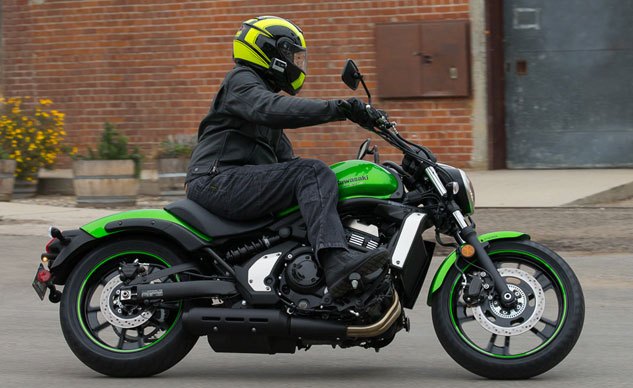
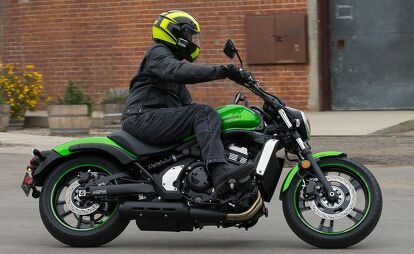















































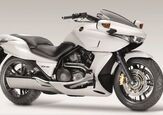
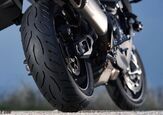
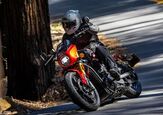

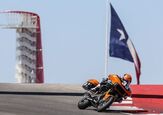
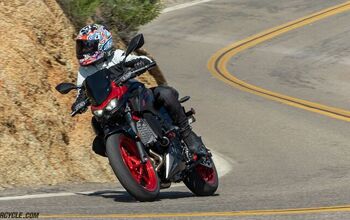
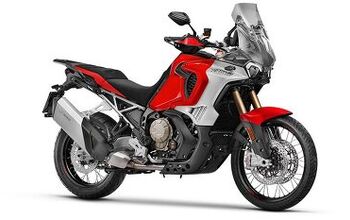
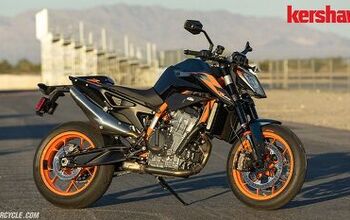


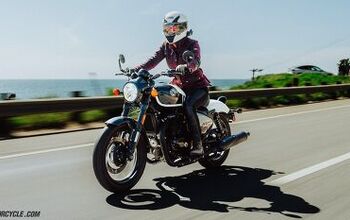
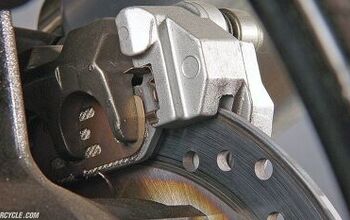
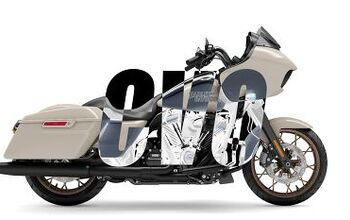
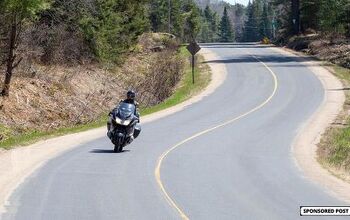
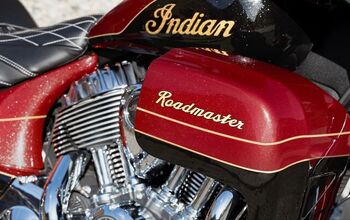
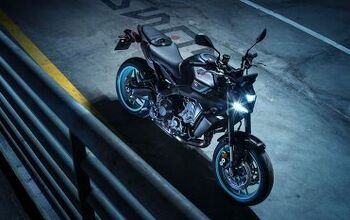
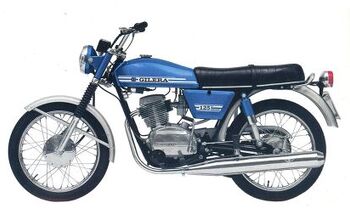

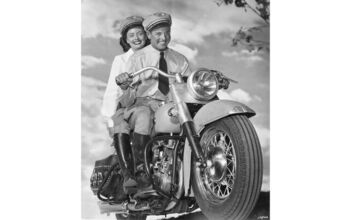


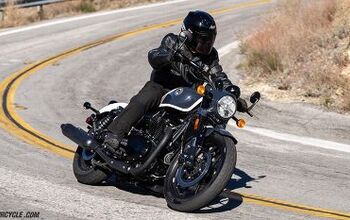
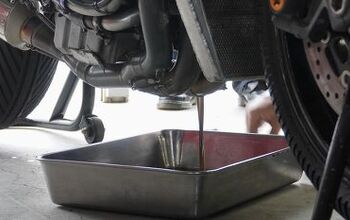
Comments
Join the conversation
Nice bike, I love what Kawasaki did with the adjustable seating. This is also one of my favorite cruisers in appearance. I would like to buy one of those.
This Kawasaki is far better than just about every sport cruiser below $9k on the market today. I just purchased a 2015 with about 6k on the odometer and it has a full Delkevic aftermarket exhaust and this bike is a straight up hooligan , a rip roaring blast to ride. It handles like a sport bike, turns in quick and nimble, brakes are crisp and sharp and the transmission shifts true and strong. For reference...I have owned the Yamaha 650 Vstar, 950 Vstar (good bike) just not as quick. V Star 250 , HD Deuce 96ci, HD 883 Superlow, Yamaha FZ6 (great bike) Yamaha Raider 113ci (awesome but its heavy approx 758 lbs and Kawasaki 2012 Ninja 650....Good Review Evans, however on the Midsize post Modern shootout the rest of the staff didn't agree with you and I and they thought the HD 750 and the Honda 700CTXN were in the same class or better.....um no